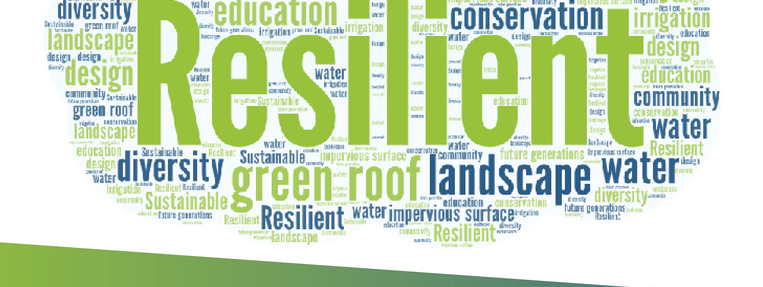What does it mean? The difference between resiliency and sustainability
Is resiliency the new sustainability? Experts say no. The two are related but clearly different. Sustainability refers to “development that meets the needs of the present, without compromising the ability of future generations to meet their own needs.1" While resiliency is defined as “the intentional design of buildings, landscapes, communities, and regions in response to vulnerabilities to disaster and disruption of normal life.2”
As design professionals, we interact with contractors, engineers, and architects who are all concerned with sustainability as well as resilient design to protect against vulnerabilities from more extreme weather and natural events such as hurricanes, floods, fire, and earthquakes. Resilient design has a proactive bent to it. How do design professionals design buildings and landscapes to ensure resiliency in the face of potential natural disasters?
The Resilient Design Institute has many ideas – below are 10 stand out concepts for resilient design:
- Electricity – designing buildings with enough renewable energy to keep the basic system running.
- Getting people to safety – is there emergency access?
- Food/Water Access – considering areas to store emergency food, first aid, water, and useful tools in the case of entrapment.
- Diverse and redundant systems are inherently more resilient.
- Apply water conservation practices and harvest rainwater.
- Consider Community Scale – community gathering places such as dog parks to strengthen the fabric of community.
- Design vegetated roofs and rainwater bioswales to reduce urban heat and manage stormwater.
- Create community facilities to serve as gathering places during emergencies (such as schools).
- Foster community education programs to build greater understanding of our natural systems and community infrastructure.
- Maintain and protect aquifers.
Our landscape architects at AHBL work with resilient design principals on many of their community projects. AHBL’s irrigation designs employ water conservation measures by using drip irrigation and weather-based irrigation control systems. Many of our multi-family residential projects use vegetated roofs to decrease impervious surfaces in urban areas. These vegetated roof areas are often combined with resident gathering and amenity spaces to create more natural settings. Our civil and landscape teams have worked internationally where there is an even greater emphasis on resilient design, including 100-year building lifespans and depending on location, the ability to remain inside during a Category 5 Hurricane.
1According to the 1987, United Nations World Commissions on Environment and Development report titled, “Our Common Future.”
2According to the Resilient Design Institute.https://www.hydropoint.com/blog/resilience-is-the-new-sustainability/
